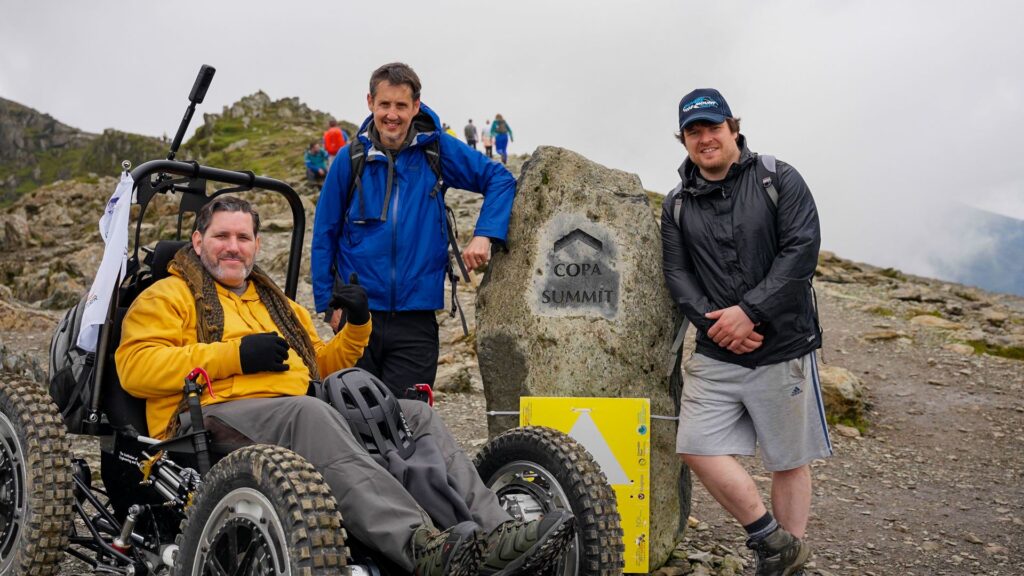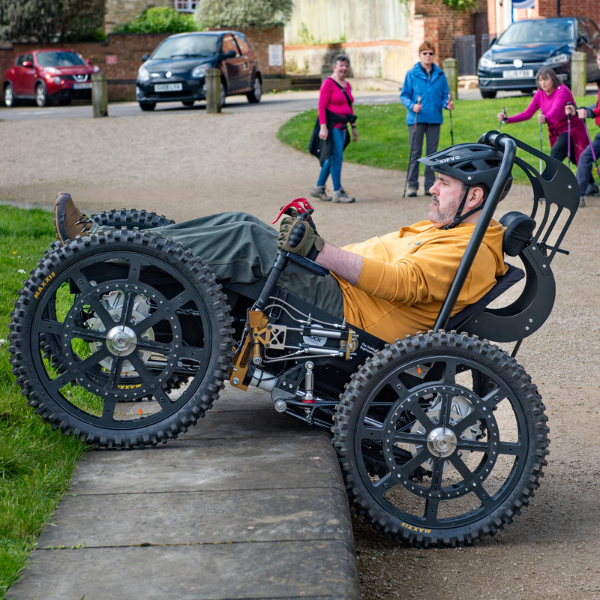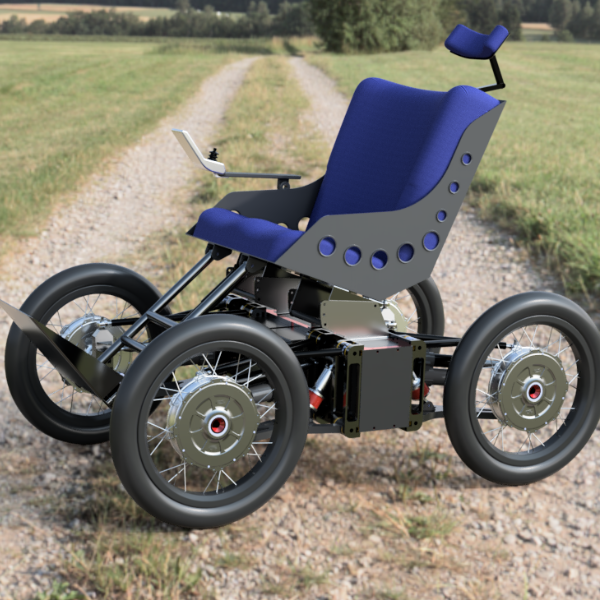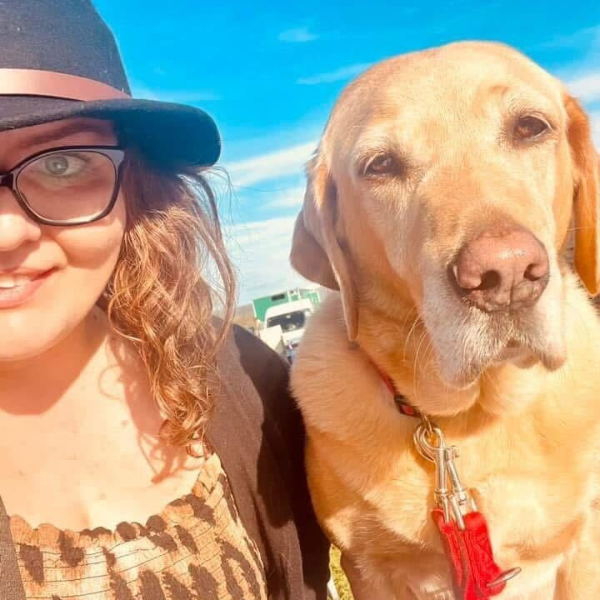Interviewed and authored by Mary Senier

In this exclusive interview, Nick Wilson, the Disabled Adventurer, met with Transreport’s Director of Consumer Engagement and Policy Emma Partlow, to discuss the highly anticipated screening of Project RockClimber.
This powerful documentary will chronicle Nick’s groundbreaking 2024 ascent of Mount Snowdon using a custom-engineered power mobility chair, RockClimber, making history as the first Disabled person to climb the mountain unaided.
Together, Nick and Emma delve into the journey behind this achievement, reflecting on the power of innovation for breaking down barriers and the extraordinary potential of inclusive design.
Their conversation highlights the broader implications of accessibility technology in empowering equitable access to the same richness of experience, transforming perceptions of what is truly possible when accessibility is prioritised by all.
Nick, what motivated you to embark on this journey with RockClimber?
“I was navigating a new chapter in my life as a newly Disabled person,” Nick recalls. “I was in that research phase – figuring out what I could do and where I could go in my power chair.”
While activities like archery, shooting, and foot golf were enjoyable, they didn’t quite meet Nick’s needs. “As someone who’d spent 14 years in the army, I was used to a certain level of adrenaline. I needed to find something that could replace that rush.”
His love of the outdoors led him to explore activities like the Backup Trust’s annual wheelchair pull-up of Mount Snowdon. However, he found the approach did not resonate with him.
“The climber is accompanied by a support team of 16 to 20 people,” he explains. “I thought, why can’t I do it myself? Why do I need a big team? Most people don’t have access to that kind of support. A one-off accessible adventure is great – but adventure should be accessible all the time.”

Determined to find a solution, Nick began researching all-terrain and off-road power chairs. While running his Talk Mental Health group, a friend introduced him to Rock Engineering. “I naively asked them how much it would cost to build me something with a seat, four wheels, and a motor to take me up a mountain,” he recalls with a laugh.
To his surprise, the response was overwhelmingly positive. “A month later, they came back and said, ‘We really want to help you. We’re going to start this project.’ That’s how the two-year journey of RockClimber began,” Nick says.
“This project was about pushing boundaries, scratching that itch for adventure, and proving that the outdoors could be accessible on my own terms.”
– Nick Wilson
Emma, how does Project RockClimber portray accessibility?
“Project RockClimber is a powerful example of why perceptions of accessibility must continue to evolve beyond a clinical form,” says Emma. “This project takes accessibility to a new level – demonstrating the power of technological advancement for facilitating access to life experiences such as outdoor adventures and pursuits.
“This is our focus at Transreport, where our technology is designed to empower access to more inclusive experiences,” Emma explains. “But there can be no set definition of accessibility because everyone experiences this differently depending on individual impairment effects, circumstances and access needs.”
Emma highlights the importance of recognising this diversity of experience when designing for accessibility. “Even with the best universal design principles, it is crucial to hold space for intersectional perspectives and identities. Co-creation and the principle of ‘nothing about us without us’ is essential to create solutions that foster genuine inclusion.”
“Project RockClimber highlights that technology has a key role in promoting autonomy and ensuring people have access to experiences and adventures.”
– Emma Partlow
Nick, did you encounter any particular challenges when preparing for this journey?
“Preparing for this journey was a huge challenge,” Nick reflects. “I was pushing the boundaries of what accessibility means and trying to bring a sense of joy and freedom to it. The journey felt like a mountain itself, especially as I was learning about inclusive design and accessibility from scratch.”
“The biggest challenge was emotional – I was rediscovering my identity as a Disabled person. There were days when I felt unworthy of the chair, as if others deserved this opportunity more. But the thought of what the chair could provide – of finally climbing a mountain unaided – kept me going.”
Nick comments, “As tough as it was, it has been one of the most rewarding experiences of my life. Some of the biggest journeys of discovery are the hardest, but they’re the most worthwhile.”
Looking ahead, Nick is excited about the evolution of the technology that began with the RockClimber chair. “The new chair, Free Solo, is a game-changer. It’s set to be more versatile, accessible, and affordable. A key differentiator for Free Solo is that it fits through standard doors – a huge advancement in all-terrain chairs, which often cannot access shops and restaurants, for example.
“The goal is to make it available for more people to experience the outdoors, without the financial barriers that typically hold them back.”

“Ultimately, we want places to offer these vehicles, so people can go on adventures and experience freedom without limitations. We’ve proven with RockClimber that this approach works, and now it’s about demonstrating to governments that investing in the right wheelchair services and equipment can save money in the long run, while creating real, meaningful access.”
“We won’t overcome all accessibility barriers because it is so personal and subjective for each individual, but innovation can improve access to the environment significantly. The next step is making that kind of technology accessible for everyday use.”
– Nick Wilson
Emma, what message do you hope the documentary sends to the wider community?
“This project demonstrates how innovation can break down barriers and open up new possibilities for Disabled people. The key is making this technology accessible and affordable, ensuring more people can benefit from it. It is exciting to see the commitment to widening access to these opportunities, allowing more individuals to experience the outdoors.”

She continues, “But it’s not just about physical access. We also need to recognise the importance of fun and enjoyment in accessibility. Nick’s journey really underscores that. Accessibility is not just about being able to get to the shops or medical appointments; it’s about safe and confident access to experiences, the autonomy to have fun, to enjoy life and undertake the experiences you want to.”
“Removing barriers to access demands a societal shift in understanding when it comes to what accessibility really means.”
– Emma Partlow
Nick, what can viewers expect from Project RockClimber?
“I want to show the younger Disabled generation that they can still have fun – accessibility needs to also be about fun,” Nick emphasises.
“Ultimately, this documentary sends a message of belief – a belief in a future where accessibility is not just functional but empowering, exciting, and filled with possibility.”
Project RockClimber will be screened privately on 31st January to obtain feedback from the Disabled community prior to public launch later this year.